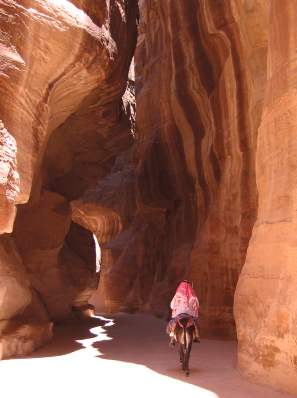
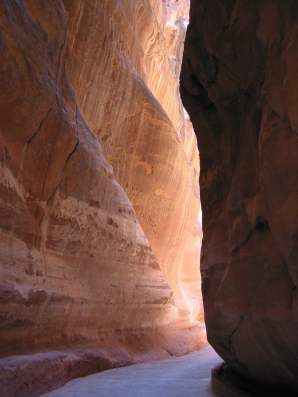
Petra is stunningly beautiful. To get to Petra, one has to walk through a 1.2 km long natural gorge called the Siq.


The end of the siq opens suddenly to the drama of al-Khazneh (the treasury).
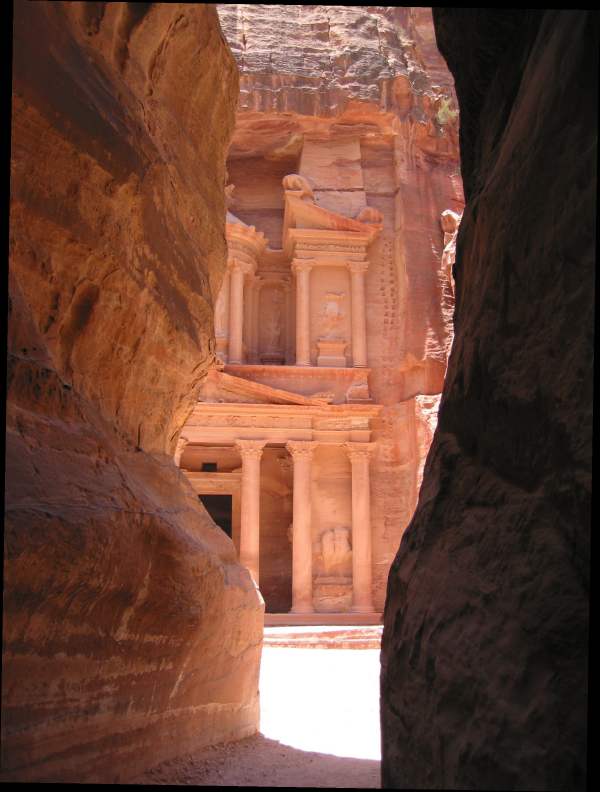
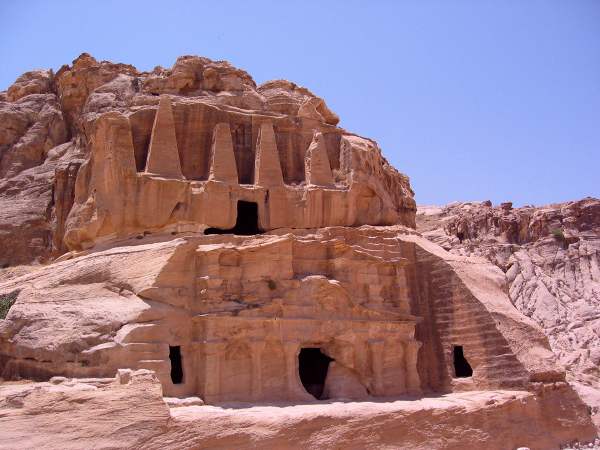
The eerie Street of Facades, and the 7000-seat Theatre.
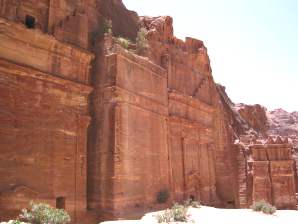
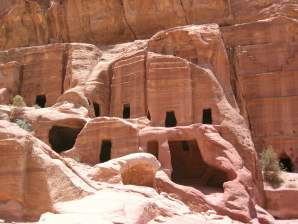
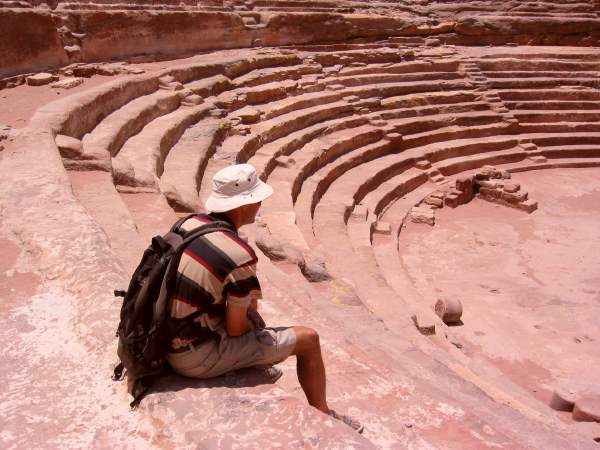
The distinctive marbling of Petra rock.
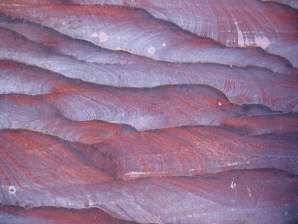
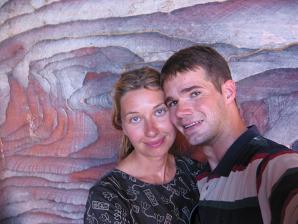
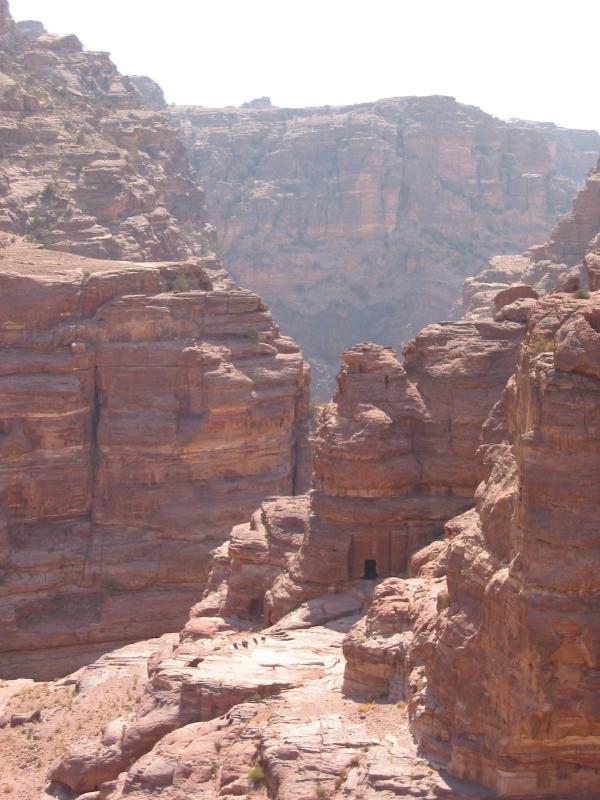
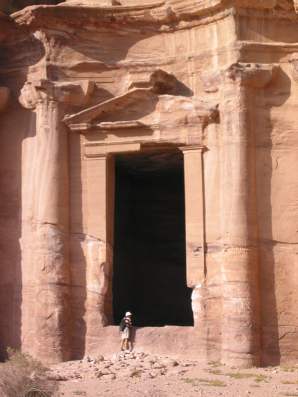
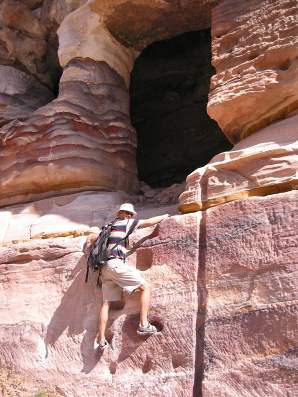
Petra's largest facade is 45 by 50 metres, on the temple or royal tomb called ad-Dayr (the monastery). It is located at the summit of the mountain overlooking the centre of Petra. The trek along an ancient processional way is demanding in the heat, but the views are breathtaking, and definitely worth the climb.
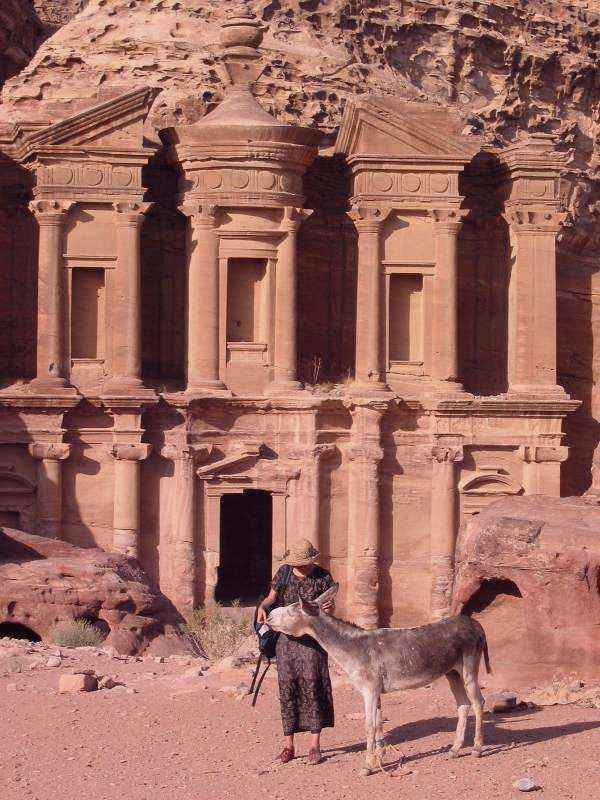
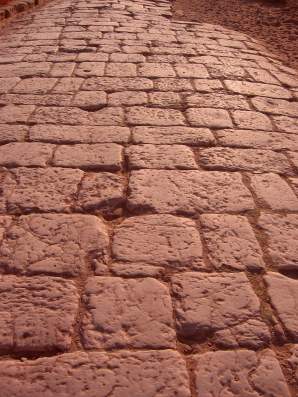
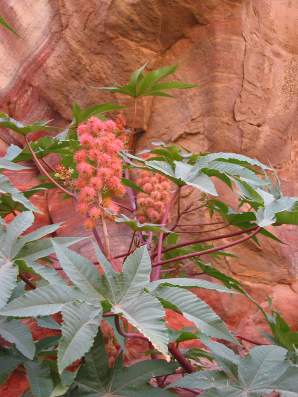
A view from the High Place of Sacrifice, al-Madhbah, located on top of another mountain, right above the Treasury.
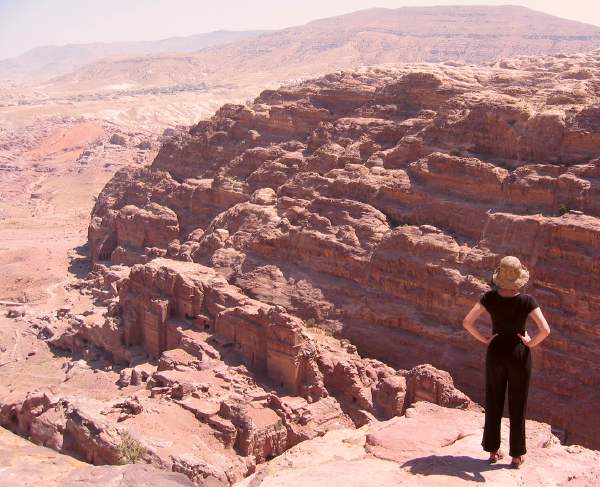
Newly discovered mosaics on the floor of a Byzantine church.
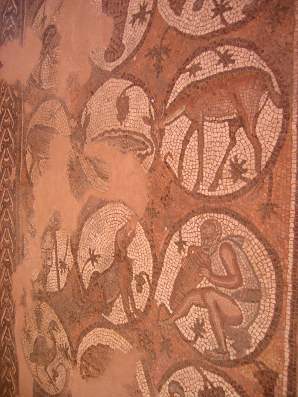
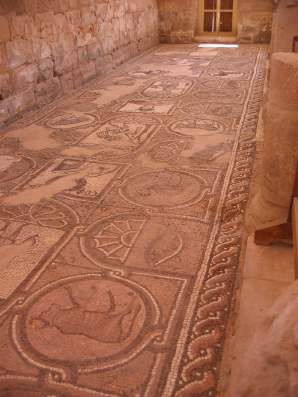
Andreas exploring the inside of one of the temples.
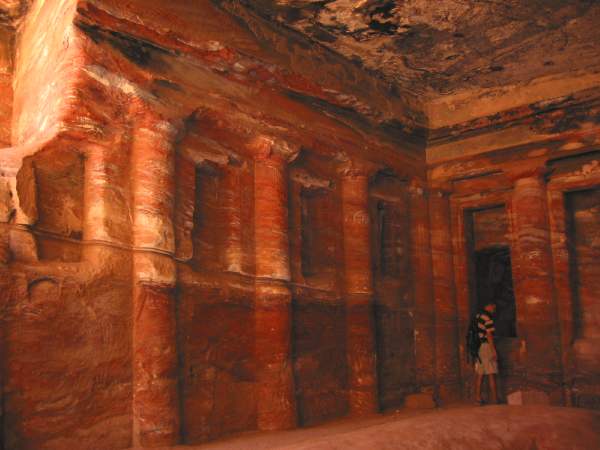
In the days before the Israeli/Palestinian problems, Petra was daily visited by 3000 to 4000 people. On the first day we visited, there was a grand total of 35 tickets sold for the whole day. There is no-one around, and at the moment the place is beautifully quiet and peaceful. This was good for us, but not so good for the local Bedouins who live from the tourists.
The children use the opportunity to ride (and pose).
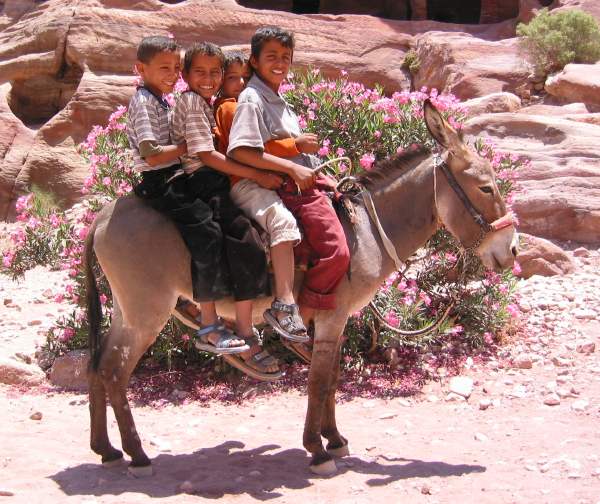
An old lady selling Nabatean coins collected during the Spring flush floods.
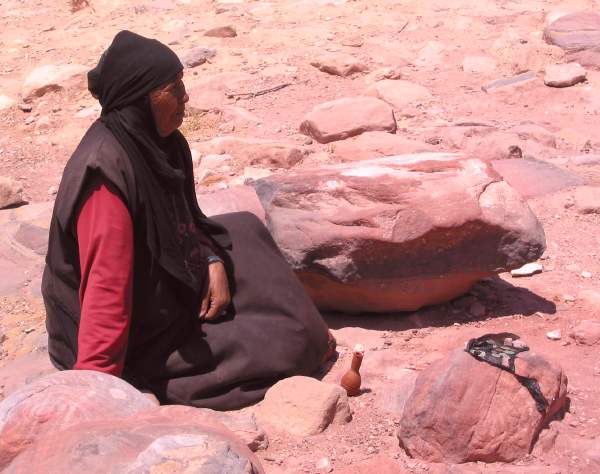
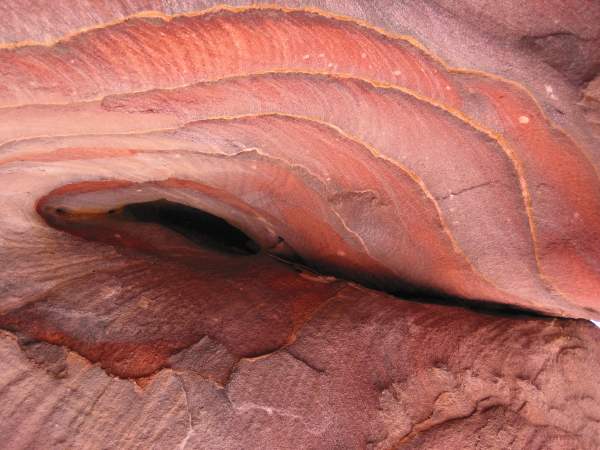
Our friend Anas, showing off on his horse Asrak. He is an excellent rider! When they are not working with tourists, they are training for a 120 km marathon due in November this year.
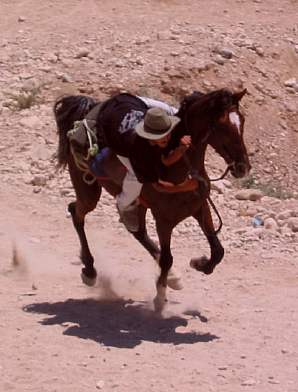
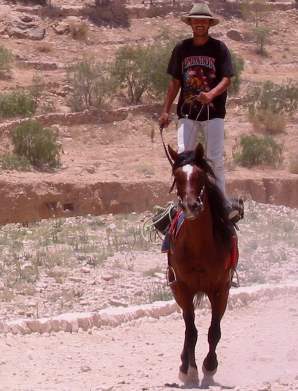





|
page 4 of 12
Silvija Seres, July 2002